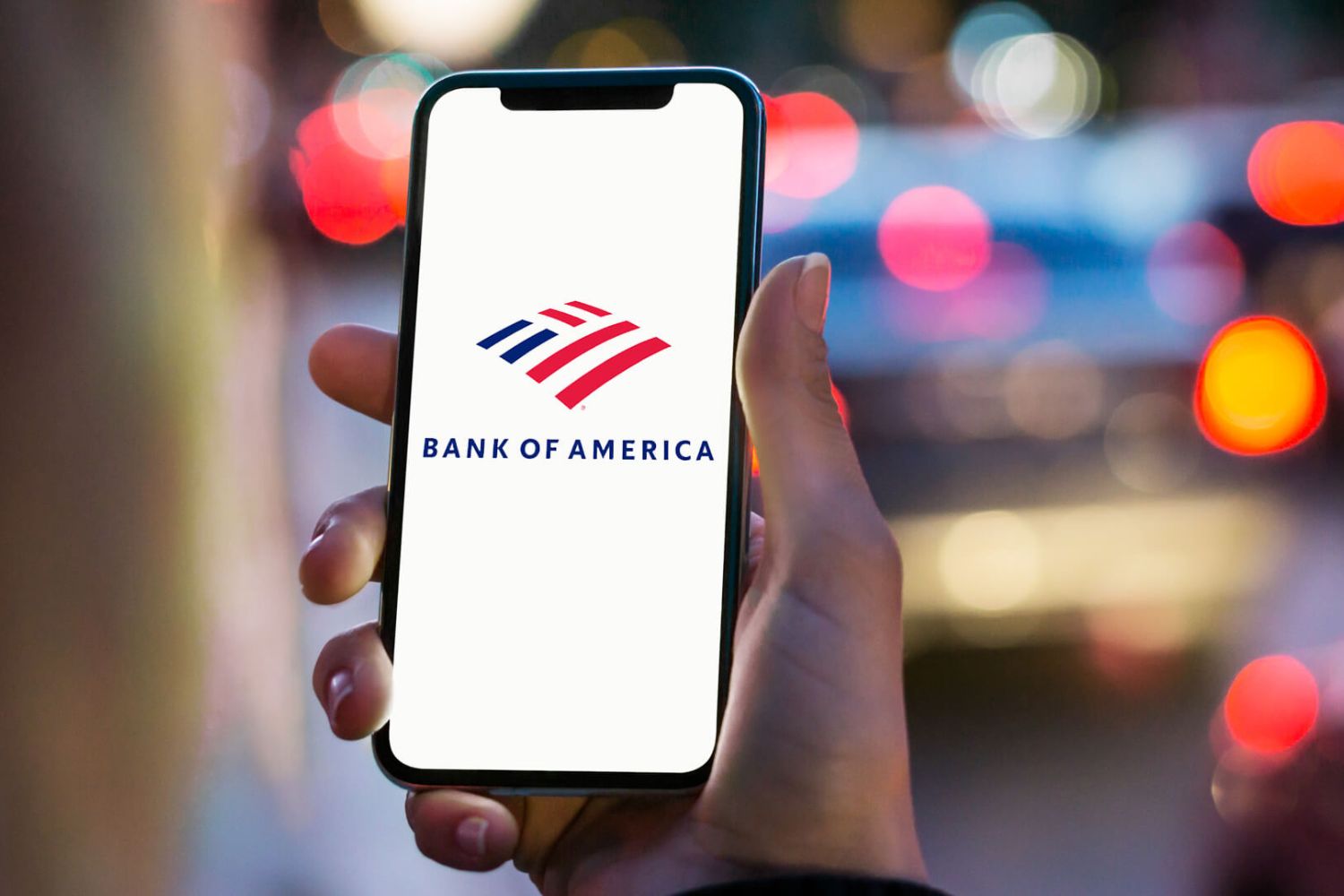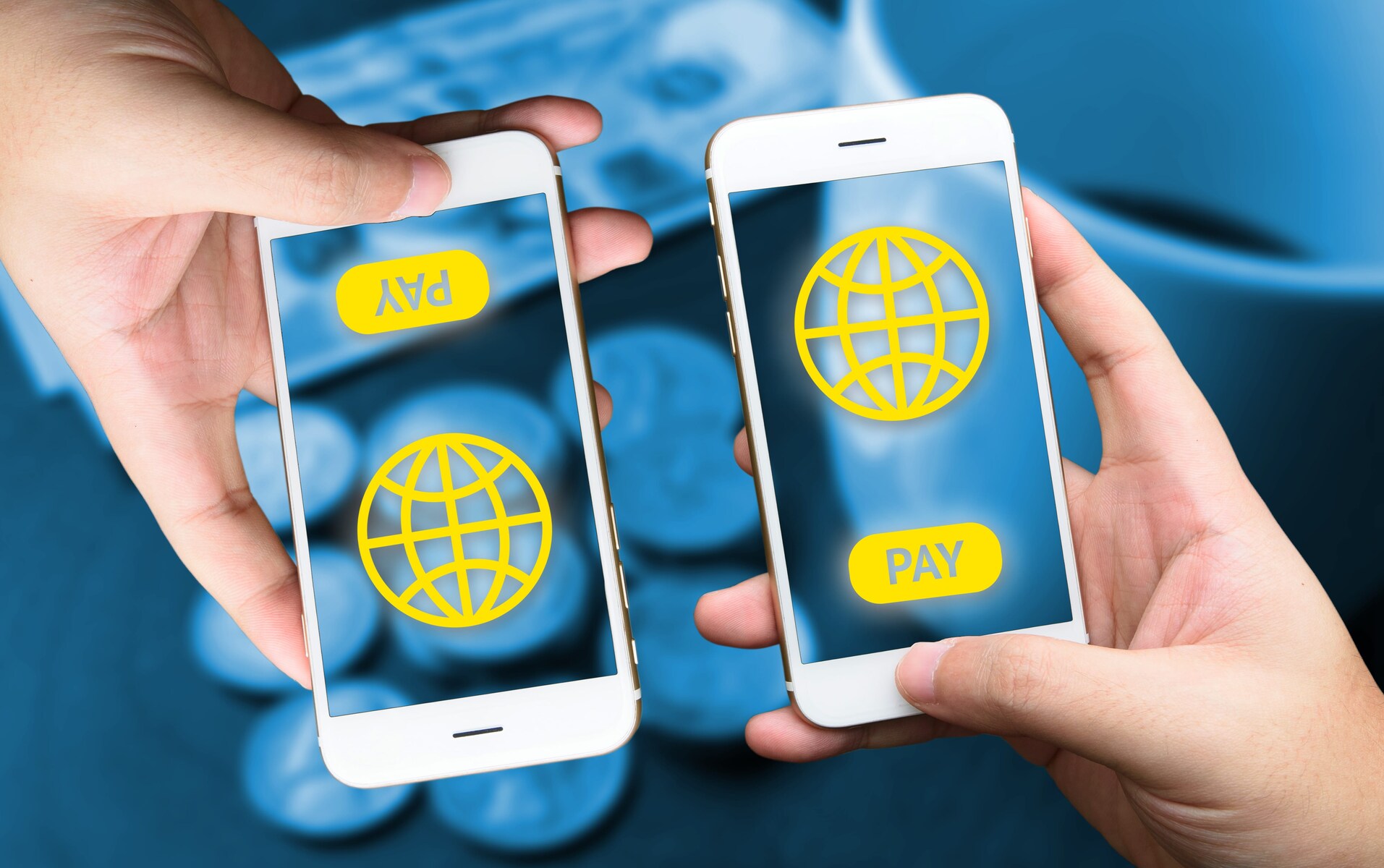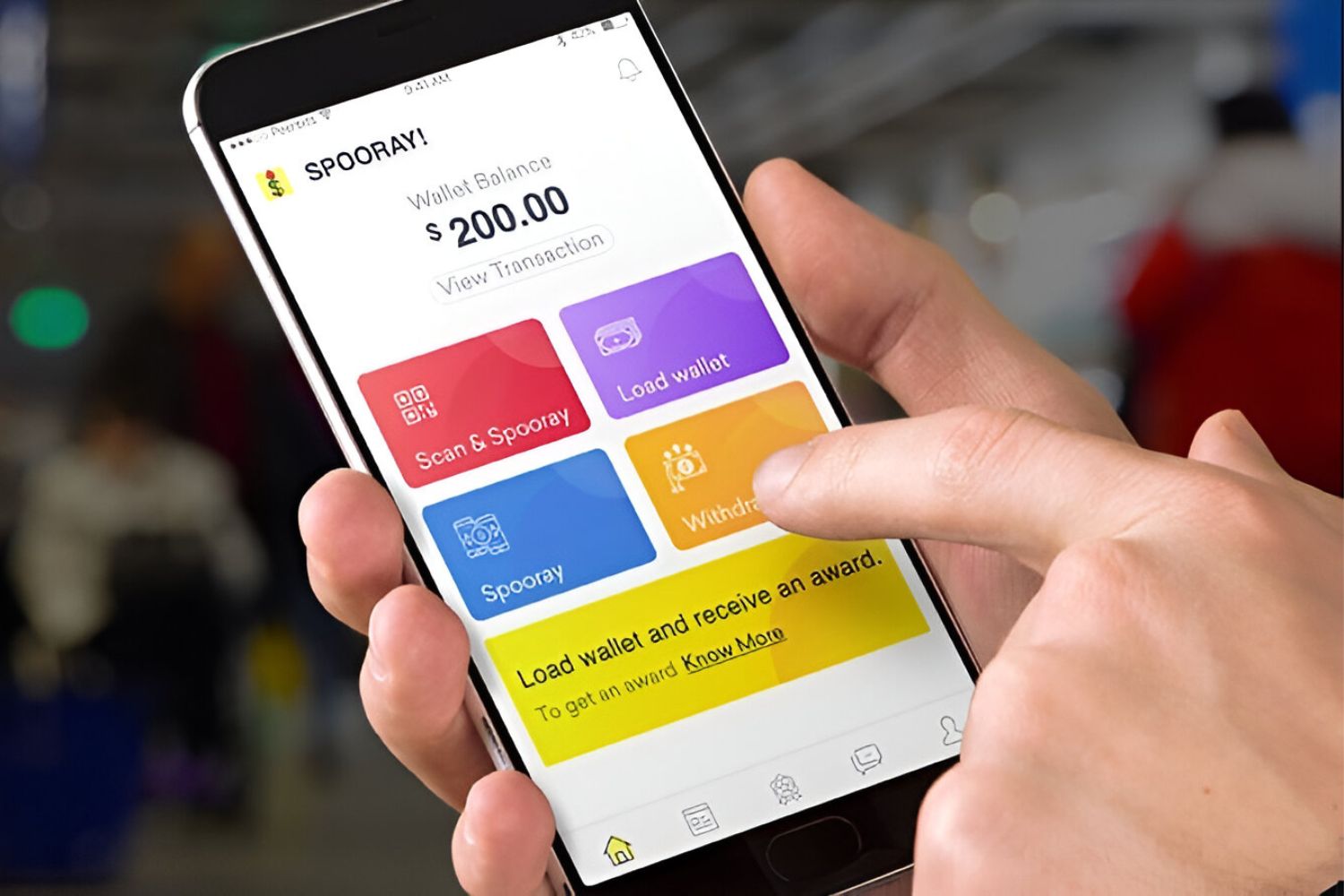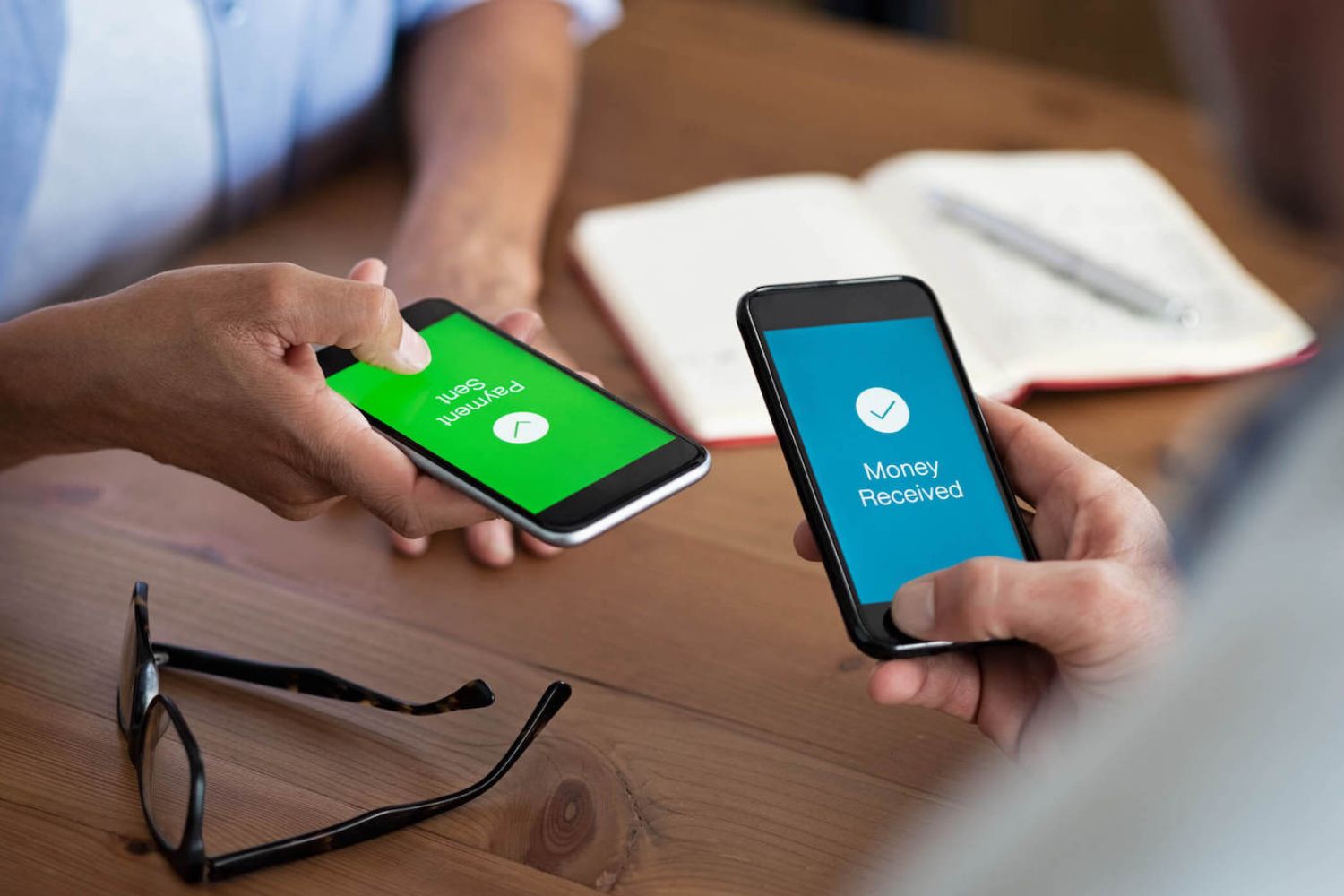Introduction
Money transfer has come a long way from the traditional methods of sending cash or writing checks. With the advent of technology, Peer-to-Peer (P2P) money transfer has gained popularity as a convenient and efficient alternative. P2P money transfer allows individuals to send money directly to each other without the need for intermediaries such as banks or payment processors.
Whether you need to split bills with friends, send money to your family overseas, or pay for goods and services, P2P money transfer offers a quick and hassle-free solution. In this article, we will explore how P2P money transfer works, the steps involved, as well as the advantages and disadvantages of this method.
With P2P money transfer, you can say goodbye to writing checks or waiting days for a wire transfer to be processed. It enables you to transfer funds instantly, often with just a few clicks on your smartphone or computer. The convenience and user-friendly interfaces of P2P apps make it an attractive option for individuals seeking a fast and secure way to send money.
Furthermore, P2P money transfer eliminates the need to carry large amounts of cash or worry about lost checks. The funds are transferred digitally, reducing the risks associated with physical currency.
As with any financial service, it’s important to understand how P2P money transfer works and what factors to consider before using this method. By familiarizing yourself with the process, you can confidently make informed decisions regarding your money transfers.
What is P2P Money Transfer?
P2P money transfer, also known as peer-to-peer payment, is a method of transferring funds directly between individuals without the involvement of a traditional financial institution. It leverages technology to facilitate secure and fast transactions.
The concept of P2P money transfer is rooted in the sharing economy, where individuals can connect and exchange goods or services without relying on traditional intermediaries. Similarly, P2P money transfer allows individuals to send and receive funds directly, cutting out the middleman.
Typically, P2P money transfer is facilitated through mobile payment apps or online platforms. These platforms act as virtual wallets, storing your funds and allowing you to send money to others who are also using the same platform. Examples of popular P2P money transfer services include Venmo, PayPal, and Cash App.
One of the key features of P2P money transfer is the ability to link your bank account or credit card to the platform. This allows you to easily transfer funds to and from your bank account, making it seamless to send or receive money.
P2P money transfer also provides additional features such as splitting bills, requesting money from others, and making online purchases. It has become a versatile tool for managing everyday financial transactions.
It’s important to note that P2P money transfer is different from traditional bank transfers or wire transfers. While traditional methods require specific bank account details and can take several days to process, P2P transfers enable quick and immediate transactions between individuals.
By understanding the concept of P2P money transfer, you can take advantage of this convenient and efficient method to send and receive funds, making your financial transactions more streamlined and hassle-free.
How P2P Money Transfer Works
P2P money transfer works by leveraging technology to facilitate direct transactions between individuals. While the specific steps may vary depending on the platform you use, the overall process remains relatively similar. Here are the general steps involved in a typical P2P money transfer:
Step 1: Sign Up
The first step is to sign up for a P2P money transfer service. You will need to create an account and provide some personal information, such as your name, email address, and sometimes a phone number. Once your account is set up, you can start using the service to send and receive money.
Step 2: Link Bank Account
In order to transfer funds to and from your bank account, you will need to link it to the P2P money transfer platform. This is done by providing your bank account information, which may include your account number and routing number. This step ensures that you have sufficient funds to make the transfer and enables easy movement of money between your bank and the P2P platform.
Step 3: Initiate Transfer
Once your account is set up and your bank account is linked, you can initiate a money transfer. You will typically have the option to select the amount you want to send, along with the recipient’s information. Some platforms may also offer additional features, such as the ability to split bills with friends or add notes to the transfer for reference.
Step 4: Recipient Verification
In order to ensure the security of the funds, the recipient of the money transfer may need to verify their identity. This can be done through different methods, such as providing a phone number or email address associated with their P2P money transfer account. Once the recipient is verified, the transfer can proceed.
Step 5: Transfer Completion
After the recipient’s identity is verified, the funds are transferred from your P2P money transfer account to the recipient’s account. The transfer is typically processed instantly, allowing the recipient to access the funds immediately. Both parties involved in the transaction will receive notifications confirming the completion of the transfer.
P2P money transfer platforms often provide transaction history, allowing you to keep track of your transfers and view previous transactions. This can be useful for record-keeping or reconciling your financial activities.
Overall, P2P money transfer provides a convenient and efficient way to send and receive money directly between individuals. By following these steps, you can easily complete transactions in a matter of minutes, making it a preferred method for many individuals.
Step 1: Sign Up
The first step in using a P2P money transfer service is to sign up for an account. This process usually involves creating an account with the service provider and providing some personal information.
When signing up, you will typically be asked to provide basic information such as your name and email address. Some platforms may also require additional details, such as your phone number or date of birth, to verify your identity and enhance the security of your account.
During the sign-up process, you may also be prompted to create a secure password for your account. It’s important to choose a strong password that combines alphanumeric characters, symbols, and both uppercase and lowercase letters to maximize the security of your account.
Once you have provided all the necessary information and created a password, you will need to review and accept the terms and conditions of the P2P money transfer platform. It’s essential to carefully read through the terms and be aware of any transaction fees or limitations that may apply to the service.
Some P2P money transfer services may also require you to verify your email address or phone number during the sign-up process. This verification step helps to prevent fraud and ensures that the contact information provided is valid.
After completing the sign-up process, you will typically receive a confirmation email or message with instructions on how to proceed. This may include a link to verify your email address or further steps to activate and personalize your account.
Once your account is set up, you can begin using the P2P money transfer service to send or receive funds. Most platforms provide a user-friendly interface and intuitive navigation, making it easy to manage your transactions and keep track of your funds.
It’s important to note that some P2P money transfer services may require you to undergo additional identity verification processes, particularly for higher transactions or to comply with regulatory requirements. This may include providing additional documentation, such as a copy of your identification card or proof of address.
By completing the sign-up process, you establish your presence on the P2P money transfer platform and gain access to the various features and functionalities it offers. This allows you to conveniently send and receive money directly to and from individuals, revolutionizing the way financial transactions are conducted.
Step 2: Link Bank Account
After signing up for a P2P money transfer service, the next step is to link your bank account. Linking your bank account allows you to transfer funds to and from your P2P money transfer account, providing a seamless and convenient way to manage your finances.
The process of linking your bank account may vary slightly depending on the platform you are using, but generally follows these steps:
1. Provide Bank Account Information: To link your bank account, you will need to provide specific details such as your account number and the routing number of your bank. These numbers can typically be found on your checks or by contacting your bank directly. Some platforms may also require additional information, such as your name as it appears on the bank account or your billing address.
2. Verify Bank Account: Once you have entered the necessary bank account information, the P2P money transfer service will usually initiate a verification process. This may involve sending a small deposit to your linked bank account, typically just a few cents, or making a temporary authorization hold on your account. You will need to verify this transaction by checking your bank statement and providing the exact deposit or hold amount to the P2P money transfer platform.
3. Confirmation and Activation: After successfully verifying your bank account, you will receive a confirmation from the P2P money transfer service. This confirmation will typically indicate that your bank account has been successfully linked and is ready for use. At this point, you can start transferring funds between your P2P money transfer account and your bank account.
Linking your bank account provides several benefits when using a P2P money transfer service. Firstly, it allows you to easily add funds to your P2P account as needed. By connecting your bank account, you don’t have to manually initiate transfers from your bank each time you want to send money through the P2P platform.
Secondly, linking your bank account enables you to receive funds from other users directly into your bank account. When someone sends you money through the P2P money transfer service, it can be quickly and securely deposited into your linked bank account, giving you easy access to your funds.
Lastly, linking your bank account adds a layer of security to your P2P money transfer transactions. The service provider can verify the account holder’s identity by cross-referencing the information provided during the sign-up process with the details of the linked bank account. This helps prevent fraudulent activity and ensures that the funds are transferred to the intended recipient.
Overall, linking your bank account to a P2P money transfer service streamlines the transfer process, enables easy access to funds, and enhances the security and integrity of your financial transactions.
Step 3: Initiate Transfer
Once you have signed up for a P2P money transfer service and linked your bank account, you are ready to initiate a transfer. This step allows you to specify the amount of money you want to send and provide the necessary recipient information.
The process of initiating a transfer may vary slightly depending on the platform you are using, but generally follows these steps:
1. Select Transfer Option: Within the P2P money transfer service, locate the option to initiate a transfer. This may be prominently displayed on the homepage or within a dedicated section of the app or website. Click on the appropriate link or button to proceed.
2. Enter Transfer Details: On the transfer initiation page, you will be prompted to enter the amount of money you want to send. Some platforms may also provide options for selecting the currency or specifying the purpose of the transfer, such as “personal” or “business.”
3. Provide Recipient Information: Next, you will need to provide the recipient’s information, such as their name, contact details, or their username within the P2P money transfer service. Ensure that you enter the correct information to avoid any delays or issues with the transfer.
4. Additional Features: Depending on the platform, you may have the option to split the transfer among multiple recipients or add notes or memos to the transaction. These additional features can be helpful for specific scenarios, such as splitting a bill with friends or providing important context for the recipient.
5. Review and Confirm: Take a moment to review all the details you have entered, including the transfer amount and recipient information. Double-checking these details ensures accuracy and helps prevent any misdirected transfers. Once you are satisfied, proceed to confirm the transfer.
Upon confirming the transfer, the P2P money transfer service will typically initiate the transaction immediately. The funds will be deducted from your linked bank account and transferred to the recipient’s account associated with the P2P service.
Most P2P money transfer services provide real-time notifications or confirmations of the transaction. You will typically receive a notification on your mobile device or an email confirming the details of the transfer, including the amount sent and the estimated time of arrival for the recipient.
It’s important to note that some P2P money transfer services may limit the maximum transfer amount or impose certain transaction fees. Be aware of these limitations and fees when initiating a transfer to ensure a smooth and cost-effective experience.
By following the steps to initiate a transfer, you can take advantage of the P2P money transfer service to send money conveniently and securely to individuals, whether it’s for splitting bills, repaying friends, or any other financial transaction.
Step 4: Recipient Verification
After initiating a transfer through a P2P money transfer service, the next step is recipient verification. This step ensures the security and accuracy of the transaction by confirming the identity of the recipient before the funds are transferred.
The process of recipient verification may vary depending on the platform used, but generally includes the following steps:
1. Identity Confirmation: The recipient may be required to confirm their identity through the P2P money transfer service. This can include providing personal information, such as their full name, email address, phone number, or any other details specified by the platform. The purpose is to ensure that the recipient is the intended recipient of the funds and to prevent unauthorized access to the transfer.
2. Security Code: In some cases, the P2P money transfer service may generate a security code that needs to be entered by the recipient to confirm their identity. This code may be sent via email, text message, or another secure method of communication. By inputting the security code, the recipient demonstrates that they have access to the specified contact information and reinforces their identity verification.
3. Additional Verification Steps: Depending on the P2P money transfer service and the specific requirements, additional verification steps may be necessary. This could include submitting supporting documents, such as a valid identification card, a utility bill with the recipient’s name and address, or other forms of proof. These additional verification steps may be triggered by specific transaction amounts, recipient profiles, or the platform’s risk assessment algorithms.
Once the recipient’s identity is successfully verified, the transfer can proceed. The P2P money transfer service will transfer the funds from the sender’s account to the recipient’s account associated with the platform. This process is typically instantaneous, providing quick access to the funds for the recipient.
Recipient verification plays a vital role in ensuring the security and integrity of P2P money transfers. By confirming the recipient’s identity, the risk of fraudulent activity or misdirected transfers is significantly reduced, protecting both the sender and the recipient.
It’s important for both senders and recipients to closely follow the recipient verification process and promptly provide any requested information or documents. This helps to facilitate a smooth and efficient transfer without unnecessary delays or disruptions.
Remember, recipient verification is a crucial step in the P2P money transfer process, as it adds an extra layer of security and trust to the transaction. By completing this step, you can have peace of mind knowing that your funds are being transferred securely to the intended recipient.
Step 5: Transfer Completion
After recipient verification in the P2P money transfer process, the final step is the completion of the transfer. This step confirms the successful transfer of funds from the sender to the recipient, ensuring that the intended transaction is completed.
The process of transfer completion may vary slightly depending on the P2P money transfer service used, but generally follows these steps:
1. Confirmation Notifications: Upon successful completion of the transfer, both the sender and the recipient will typically receive notifications from the P2P money transfer service. These notifications commonly include details such as the amount transferred, the date and time of the transaction, and the sender and recipient information.
2. Funds Availability: Once the transfer is completed, the funds become available to the recipient within their P2P money transfer account. This enables the recipient to access and manage the received funds as per their needs, such as withdrawing to their linked bank account, using the funds for additional transfers, or making purchases if supported by the platform.
3. Transaction History: The P2P money transfer service usually maintains a transaction history that allows both the sender and recipient to track their past transfers. This feature can be useful for record-keeping purposes and for reconciling financial transactions.
4. Optional Feedback or Rating: Some P2P money transfer platforms provide an option for users to provide feedback or rate their experience with the transaction. This feedback system helps to build trust and credibility within the P2P money transfer community and can assist other users in making informed decisions regarding future transactions.
By completing the transfer, both the sender and the recipient can have confidence in the successful execution of the transaction. The P2P money transfer service acts as an intermediary, facilitating secure and efficient transfers between individuals without the need for traditional financial institutions.
It’s important to remember that P2P money transfer services are designed to provide convenience and ease of use. However, it’s always advisable to review and double-check the details of the transfer, such as the recipient’s information and the transfer amount, before confirming the transaction.
By following the appropriate steps and confirming the accuracy of the transfer details, users can maximize the benefits of P2P money transfer services and ensure a seamless experience for both the sender and the recipient.
Advantages of P2P Money Transfer
P2P money transfer offers several advantages over traditional methods of sending and receiving money. Here are some of the key benefits:
1. Convenience: P2P money transfer provides a convenient way to send and receive money. It eliminates the need for physical cash, checks, or visits to the bank. With just a few taps on your smartphone or clicks on your computer, you can transfer money instantly, anytime, and anywhere, as long as you have an internet connection.
2. Speed: P2P money transfer allows for fast transactions. Unlike traditional bank transfers that can take several days to process, P2P transfers are often instantaneous. This makes it ideal for urgent or time-sensitive financial needs, such as paying bills or sending emergency funds.
3. Accessibility: P2P money transfer services are widely accessible. Most platforms offer mobile apps that can be downloaded and used on smartphones or tablets. This means that you can initiate transfers and manage your finances on the go, giving you greater flexibility and control over your money.
4. Cost-effective: P2P money transfers are often more cost-effective compared to traditional methods, such as wire transfers or remittance services. Many P2P platforms offer low or no transaction fees for standard transfers, especially when sending money domestically. This can result in significant savings, particularly for frequent or large transfers.
5. Security: P2P money transfer services prioritize the security of their users’ financial information. They employ encryption technology and advanced security protocols to safeguard your personal and financial data. Additionally, P2P transfers reduce the need for carrying large sums of cash, minimizing the risk of theft or loss.
6. Ease of Use: P2P money transfer services are designed with user-friendliness in mind. The interfaces are intuitive, making it easy for individuals of all ages and technical abilities to navigate and initiate transactions. Sending money through a P2P platform typically requires only a few simple steps, simplifying the process for users.
7. Additional Features: Many P2P money transfer services offer additional features to enhance the user experience. This can include functionalities like bill splitting, request money options, and the ability to make online purchases. Such features provide added convenience and efficiency for managing your finances.
8. Transparency: P2P money transfer services provide transaction histories, allowing users to view past transfers and monitor their financial activities. This transparency helps you keep track of your expenses, reconcile transactions, and maintain a clear record of your financial history.
P2P money transfer services have revolutionized the way individuals send and receive money. With their convenience, speed, accessibility, and cost-effectiveness, they have become a popular choice for many people across various financial needs.
However, it’s important to note that each P2P money transfer service may have specific advantages and features, so it’s advisable to research and compare different platforms to find the one that best aligns with your specific requirements.
Disadvantages of P2P Money Transfer
While P2P money transfer offers many benefits, it’s important to be aware of some potential drawbacks. Here are a few disadvantages to consider:
1. Limited Acceptance: Not all individuals or businesses accept P2P money transfers as a form of payment. This can be an issue if you need to transfer funds to someone who does not use the same P2P service or if you encounter a merchant that does not accept P2P transfers. It’s essential to ensure that the recipient is willing to receive funds through the specific platform you are using.
2. Security Risks: While P2P money transfer services prioritize security, there is always a risk of unauthorized access or fraudulent activity. Hackers or scammers may attempt to exploit vulnerabilities in online platforms or target unsuspecting individuals. It’s crucial to follow best practices, such as using strong passwords and keeping your personal information secure, to mitigate these risks.
3. Transfer Limits: Some P2P money transfer services impose limitations on the amount of money you can send or receive. These limits can vary based on factors such as your account history, verification status, or regulatory requirements. If you frequently transfer large sums of money, these limits may be a hindrance and require you to explore additional options.
4. Dependence on Technology: P2P money transfer relies heavily on technology and an internet connection. If you experience technical difficulties, network outages, or other technological issues, it may disrupt your ability to initiate or complete transfers. It’s always advisable to have alternative payment methods as a backup, especially in situations where technical disruptions are common.
5. Transfer Fees: While many P2P money transfer services offer low or no transaction fees for standard transfers, some transactions may still incur fees. For example, expedited transfers or transfers involving currency conversion may come with additional charges. It’s essential to review the fee structure of the specific P2P service you are using to understand any potential costs associated with your transfers.
6. Limited Customer Support: Some P2P money transfer services may have limited customer support options. If you encounter any issues or need assistance, it may be challenging to reach a customer service representative for timely resolution. It’s advisable to review the customer support channels available and the service provider’s responsiveness before relying on a particular P2P platform.
7. Possible Delay in Funds Availability: While P2P money transfers are often fast, there may be instances where the availability of funds to the recipient is delayed. Factors such as bank processing times or verification procedures can impact the speed at which the recipient can access the transferred funds. It’s important to communicate any urgent transfer needs to the recipient and set appropriate expectations if delays are anticipated.
Considering these disadvantages can help you make informed decisions when using P2P money transfer services. By understanding the potential drawbacks, you can effectively manage any challenges that may arise and maximize the benefits of this convenient and efficient method of transferring funds.
Considerations before Using P2P Money Transfer
Before using a P2P money transfer service, it’s important to carefully consider certain factors to ensure a seamless and secure experience. Here are some key considerations to keep in mind:
1. Security and Privacy: Evaluate the security measures implemented by the P2P money transfer service to protect your personal and financial information. Look for services that utilize encryption, multi-factor authentication, and other security protocols. Additionally, review the service’s privacy policy to understand how your data is handled and shared.
2. Reputation and Reviews: Research the reputation of the P2P money transfer service you are considering. Look for user reviews, ratings, and feedback to gauge the experiences of others. A trusted and reputable service provider is crucial to ensuring the reliability and security of your transfers.
3. Compatibility and Accessibility: Ensure that the P2P money transfer service is compatible with your devices and operating systems. Check if the service offers mobile apps or if it can be accessed via a web browser. Additionally, consider the availability and accessibility of the service in the countries or regions you plan to use it in, especially if you frequently transfer funds internationally.
4. Transfer Limits and Fees: Review the transfer limits imposed by the P2P money transfer service to ensure they align with your financial needs. Consider any potential fees associated with transfers, including transaction fees, currency conversion fees, or expedited transfer charges. Understanding the cost structure will help you make informed decisions regarding your transfers.
5. Customer Support: Assess the customer support options provided by the P2P money transfer service. Check if they offer multiple channels of support, such as live chat, email, or phone support. Prompt and reliable customer support can be crucial in resolving any issues or concerns that may arise during your use of the service.
6. Transfer Speed and Availability: Consider the speed at which transfers are processed and made available to the recipient. While most P2P money transfers are quick, some platforms may have longer processing times depending on various factors. If you frequently need to initiate time-sensitive or urgent transfers, choose a service that offers expedited or immediate transfer options.
7. Alternatives and Backup Options: Evaluate alternative payment methods or money transfer services as backup options. While P2P money transfer may be convenient, having alternative means to transfer funds can be useful in case of any unforeseen circumstances, such as technical glitches or unavailability of the service.
8. User Experience and Interface: Test-drive the P2P money transfer service and assess the user experience and interface. Look for an intuitive and user-friendly platform that allows for easy navigation, transaction management, and quick access to necessary features. A well-designed interface can enhance your overall experience when using the service.
By considering these factors, you can make informed decisions when choosing and using a P2P money transfer service. Taking the time to assess the security, reliability, costs, and user experience ensures that you select a suitable platform that meets your specific needs for transferring funds conveniently, efficiently, and securely.
Conclusion
P2P money transfer has revolutionized the way individuals send and receive money, providing a convenient, fast, and secure alternative to traditional methods. By leveraging technology and eliminating the need for intermediaries, P2P money transfer services allow for seamless transactions between individuals, making it easier than ever to split bills, repay friends, or send funds to family and loved ones.
In this article, we explored the various steps involved in using P2P money transfer services, from signing up and linking a bank account to initiating transfers and completing transactions. We also discussed the advantages of P2P money transfer, such as convenience, speed, accessibility, and cost-effectiveness.
However, P2P money transfer does come with considerations and potential disadvantages. It’s essential to be aware of factors such as limited acceptance, security risks, transfer limits, and transaction fees before utilizing these services. Additionally, carefully evaluating the reputation, compatibility, customer support, and user experience of the chosen platform is crucial to ensure a smooth and secure money transfer experience.
Ultimately, the decision to use P2P money transfer services rests on the individual’s specific needs and preferences. By understanding the process, weighing the pros and cons, and taking the necessary precautions, individuals can take advantage of the convenience and efficiency offered by P2P money transfer services while mitigating any potential risks.
As technology continues to advance, P2P money transfer services are likely to further evolve, bringing even more convenient and secure options to individuals worldwide. Whether you’re settling bills with friends, supporting family members abroad, or making online purchases, P2P money transfer can be a valuable tool in managing your finances effectively and efficiently.
Remember, always stay informed, make well-informed decisions, and prioritize the security of your personal and financial information when utilizing P2P money transfer services.

























